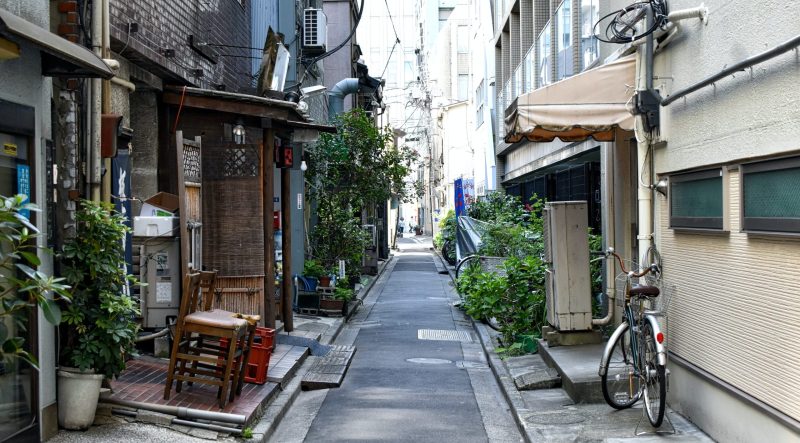Tyler is stirring the pot over at Marginal Revolution, asking whether Tokyo’s low rents are a YIMBY success or just a productivity failure: low productivity and low immigration keep demand down. He calls the latter “NIMBYism”. That framing doesn’t hold up very well, but we can discard it and think about the substance of the question.
This article was written by Salim Furth and originally published by Market Urbanism.
- If we were totally ignorant of policy, what would we expect? Alonso-Muth-Mills models say prices should be higher in larger cities, and Tokyo is the largest city in the world.
- Most people think that price/income is the right way to compare home prices across countries, although price/construction cost might be better if we could accurately measure the latter.
Let’s at least clarify the factual issues.
Are Tokyo wages low?
- Japan wages are quite low by developed-world standards. Tokyo is perhaps 22% above the national average, about half of the New York/USA markup.
- The Alonso-Muth-Mills model says the largest city should be so because its wages are highest. Obviously, that assumes free movement of people. It’s not a mystery why Karachi is larger than Austin.
- But then why is Tyler criticizing Japan for low immigration? Clearly Japanese people should emigrate, like wage peer Spaniards and Poles.
Is Tokyo cheap?
- Only relatively. I asked ChatGPT for a comparative list, but it wouldn’t even try.
- The best comparison I could find was in Demographia’s affordability yearbooks. They last included Japan in 2018 because of data reliability issues, so ymmv.


- But a Japanese PDF says that Metropolitan Tokyo’s price-income ratio was 7.16 in 2016; in Tokyo Prefecture (the core) it was 9. Who knows how the definitions differ?
- All sources agree that Japanese home prices have risen less than most of the world in the pandemic era, so current data would favor Tokyo more.
- Tyler’s claim that Japan’s “brand of NIMBYism…keeps real estate prices down” is clearly incorrect. Japan twice had asset booms that increased the price-rent ratio by 60 percentage points. It appears to be on its way to a third such price-rent boom. Lax demand is not a durable feature of the system. Responsive supply is.
Is Tokyo building & growing?
Clearly, yes. Not at the rate of, say, Cairo, but faster than developed-world megacities.
So: Is Tokyo YIMBY or NIMBY?
- Affordability is a bad way to evaluate YIMBYism. Is Cleveland YIMBY? Or Kazan?
- I won’t spill ink here, but all the stuff you’ve read in all the other posts & articles is basically true: It is easy and cheap to build housing of all types in Tokyo.
- The obvious riposte to Tyler’s claim is that “YIMBY” does not mean, “good across all related policy dimensions” but rather “good at providing residences.”
- Corollary 1: Urbanists & economists should care about aspects of cities besides housing shortages. The good news is that we do.
- Corollary 2: Japanese urbanists should not get distracted by global YIMBY discourse, because that’s not their problem.
- Corollary 3: If US cities are so much better on productivity and openness, then YIMBY concerns ought to be among the most urgent here.
Should we copy Japanese institutions?
There are lessons to be learned – but the West could not broadly adopt their institutions wholesale even if we tried. As I argue in my review of The Making of Urban Japan, the particular policy mix we associate with Tokyo or Japanese land development is a historical accident.
Japanese land use is a delicately-balanced synthesis of centralized and scattered power. If you take away an essential story or lesson, it should be the contingency of outcomes. It works because the central planners were powerful enough to preempt local government but not powerful enough to sideline landowners. It works because local governments encouraged modernization but never had enough funding to execute urban renewal. It works because otherwise strong property rights coexisted along with Land Readjustment. It works because the postwar US and Japanese authorities did not fully enforce their own edicts. It works because of the mini-kaihatsu loophole.
It works because a very specific sequence of institutions rose and declined over a very eventful century, and none of them had the time, power, or money to fully execute its vision.
Update: Demand curves
As I point out above, arguing that Tokyo’s low prices indicate low demand or high supply isn’t a great approach because the prices aren’t all that low. But we can take a stab at comparing demand across cities if we assume a common price elasticity of demand – that is, how much the population would grow if prices fell. With a bunch of assumptions, I produced this little chart, showing how low prices would have to fall to bring their populations up to that of Tokyo.

I’m not confident in the Japanese data, which are mostly for new builds, but it looks like the Tokyo metro detached home price is around ¥43m, or $289k. That would put it somewhere between the first-tier and second-tier US cities. All models are wrong, but this one suggests that the demand curve for Tokyo would fit into the U.S. distribution reasonably.





